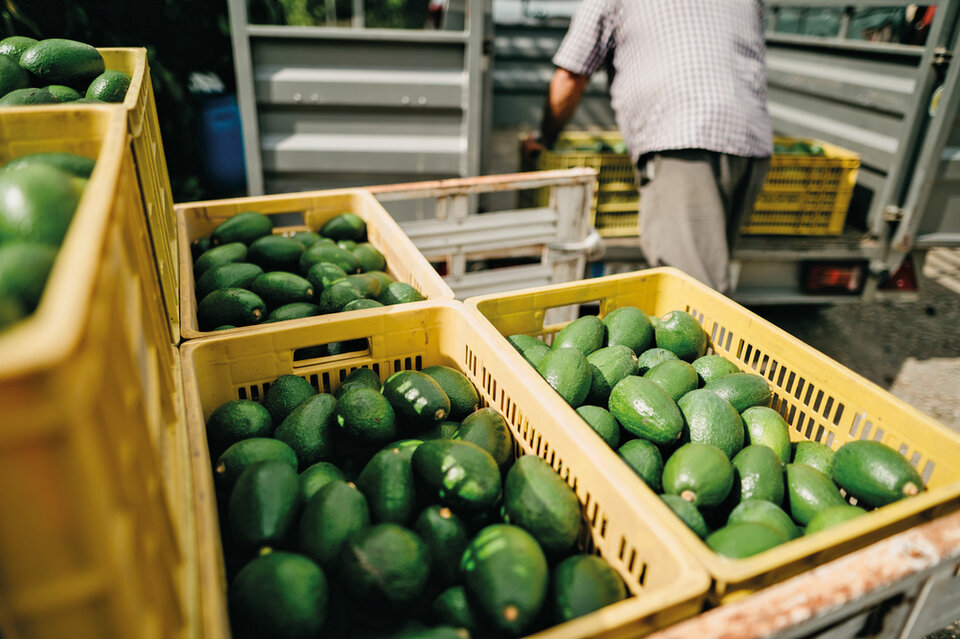from small
seeds
read time 5min

t least one in five Africans goes to bed hungry. And at a time of high food prices, conflict and climate change, more than 160 million people on our continent are facing extreme hunger, with communities in Kenya, Nigeria, Ethiopia and Somalia facing what the British Red Cross calls “the worst food crisis seen in 40 years”.
Could small-scale farmers be the solution?
South Africa provides a useful case study. Despite the country’s position as sub-Saharan Africa’s second-richest economy, a recent study by retail giant Shoprite found that nearly half (48.96%) of South Africa’s population will be food insecure by 2025. Remarkably, that’s

t least one in five Africans goes to bed hungry. And at a time of high food prices, conflict and climate change, more than 160 million people on our continent are facing extreme hunger, with communities in Kenya, Nigeria, Ethiopia and Somalia facing what the British Red Cross calls “the worst food crisis seen in 40 years”. Could small-scale farmers be the solution?
South Africa provides a useful case study. Despite the country’s position as sub-Saharan Africa’s second-richest economy, a recent study by retail giant Shoprite found that nearly half (48.96%) of South Africa’s population will be food insecure by 2025. Remarkably, that’s an improvement from just a few years ago – Shoprite’s 2023 Food Index, which leverages data on food security from World Data Lab, found that in 2020, 52% of South Africans were food insecure.
South Africa has approximately two million small-scale farmers. Their farms are typically family-owned, and operated or managed by individual farmers or families who farm livestock and cultivate a diverse range of crops, including maize, vegetables and fruit. The industry is small, but it punches far above its weight. Despite its reputation for low yields – along with its lack of mechanisation and inadequate financing solutions – small-scale farming contributed about 18.1% (ZAR75.4 billion) of the national agricultural sector’s total income of ZAR417.1 billion in 2021, according to Statistics South Africa.

Enterprise Growth
an improvement from just a few years ago – Shoprite’s 2023 Food Index, which leverages data on food security from World Data Lab, found that in 2020, 52% of South Africans were food insecure.
South Africa has approximately two million small-scale farmers. Their farms are typically family-owned, and operated or managed by individual farmers or families who farm livestock and cultivate a diverse range of crops, including maize, vegetables and fruit. The industry is small, but it punches far above its weight. Despite its reputation for low yields – along with its lack of mechanisation and inadequate financing solutions – small-scale farming contributed about 18.1% (ZAR75.4 billion) of the national agricultural sector’s total income of ZAR417.1 billion in 2021, according to Statistics South Africa.

Access to Market
Because it prioritises food production, small-scale farming is the backbone of agriculture and food security. Yet – as the World Food Programme has emphasised – small-scale farmers have been disproportionately affected by the Covid-19 pandemic, high global food prices and slowing economic growth.
Another problem for Africa’s small-scale farmers is that they characteristically cover relatively small areas of ground and are distinguished by their limited resources, including land, capital, equipment and market access. Access to capital is vital for small-scale farmers to invest in their farms, purchase inputs and improve productivity. Limited financial resources hinder their ability to invest in farm inputs, modernise their equipment and adopt improved farming techniques.
In South Africa, small-scale farmers also frequently encounter difficulties in accessing markets. The lack of reliable transportation infrastructure, market information and bargaining power can limit farmers’ ability to sell their goods
at fair prices.
Standard Bank’s OneFarm Share helps small-scale farmers obtain market access, matching requests for food relief to suppliers with good-quality excess fresh produce across the country’s nine provinces.
Launched during the food crisis sparked by the national pandemic lockdowns, the initiative aims to support the sustainability of South Africa’s farming operations. “OneFarm Share is not simply about providing hunger relief and reducing food wastage,” said Standard Bank South Africa Chief Executive Lungisa Fuzile. “It’s also about stimulating the economy and helping to re-create markets for farmers.”
Funding and Financing
Crucially, though, the South African government has also sought to support small-scale farmers through financial assistance schemes and initiatives to improve market access. In 2023, South African President Cyril Ramaphosa noted during his State of the Nation Address that about 140 000 small-scale farmers had received input vouchers to buy seeds, fertiliser and equipment. This, he said, provided a boost for food security and agricultural reform. “This initiative has led to the cultivation of some 640 000 hectares of land,” he said. “An impressive 68% of these farmers are women.”
Meanwhile, earlier this year the Department of Agriculture, Land Reform and Rural Development and the state-owned agricultural Land Bank partnered to create a ZAR1.21 billion Agro Energy Fund, which will provide financing for farmers to find alternative energy solutions amid South Africa’s continuing energy crisis. Small-scale farmers can receive financing in the form of a 70% grant and a 30% loan.
The announcement was welcomed by industry mouthpiece Agri SA. “Given the cost pressures facing farmers, notably as a result of load shedding, the Fund will provide vital support to the farmers who safeguard South Africa’s food security,” said then-Agri SA CEO Christo van der Rheede. “It will provide a combination of grant funding and loans for farmers to acquire the equipment and infrastructure needed for energy-intensive farming. Small-scale farmers will be able to access grant funding up to ZAR500,000; medium-scale farmers up to ZAR1 million; and large-scale farmers up to ZAR1.5 million.
This vital funding is essential to help maintain the financial viability of the sector, thus also protecting the livelihoods the sector sustains.


Access to Market
Because it prioritises food production, small-scale farming is the backbone of agriculture and food security. Yet – as the World Food Programme has emphasised – small-scale farmers have been disproportionately affected by the Covid-19 pandemic, high global food prices and slowing economic growth.
Another problem for Africa’s small-scale farmers is that they characteristically cover relatively small areas of ground and are distinguished by their limited resources, including land, capital, equipment and market access. Access to capital is vital for small-scale farmers to invest in their farms, purchase inputs and improve productivity. Limited financial resources hinder their ability to invest in farm inputs, modernise their equipment and adopt improved farming techniques.
In South Africa, small-scale farmers also frequently encounter difficulties in accessing markets. The lack of reliable transportation infrastructure, market information and bargaining power can limit farmers’ ability to sell their goods at fair prices.
Standard Bank’s OneFarm Share helps small-scale farmers obtain market access, matching requests for food relief to suppliers with good-quality excess fresh produce across the country’s nine provinces.
Launched during the food crisis sparked by the national pandemic lockdowns, the initiative aims to support the sustainability of South Africa’s farming operations. “OneFarm Share is not simply about providing hunger relief and reducing food wastage,” said Standard Bank South Africa Chief Executive Lungisa Fuzile. “It’s also about stimulating the economy and helping to re-create markets for farmers.”
Funding and Financing
Crucially, though, the South African government has also sought to support small-scale farmers through financial assistance schemes and initiatives to improve market access. In 2023, South African President Cyril Ramaphosa noted during his State of the Nation Address that about 140 000 small-scale farmers had received input vouchers to buy seeds, fertiliser and equipment. This, he said, provided a boost for food security and agricultural reform. “This initiative has led to the cultivation of some 640 000 hectares of land,” he said. “An impressive 68% of these farmers are women.”
Meanwhile, earlier this year the Department of Agriculture, Land Reform and Rural Development and the state-owned agricultural Land Bank partnered to create a ZAR1.21 billion Agro Energy Fund, which will provide financing for farmers to find alternative energy solutions amid South Africa’s continuing energy crisis. Small-scale farmers can receive financing in the form of a 70% grant and a 30% loan.
The announcement was welcomed by industry mouthpiece Agri SA. “Given the cost pressures facing farmers, notably as a result of load shedding, the Fund will provide vital support to the farmers who safeguard South Africa’s food security,” said then-Agri SA CEO Christo van der Rheede. “It will provide a combination of grant funding and loans for farmers to acquire the equipment and infrastructure needed for energy-intensive farming. Small-scale farmers will be able to access grant funding up to ZAR500,000; medium-scale farmers up to ZAR1 million; and large-scale farmers up to ZAR1.5 million.
This vital funding is essential to help maintain the financial viability of the sector, thus also protecting the livelihoods the sector sustains.

The Climate Question
South Africa is only now emerging from a severe multi-year drought, and although the crisis was not on the catastrophic scale of the years-long drought in the Horn of Africa, South Africa’s response provides a useful case study for the rest of the continent.
Flooding in KwaZulu-Natal in 2022, and in the Western Cape in 2023, has had devastating effects on South Africa’s small-scale farmers, many of whom either lost livestock to drowning or saw their crops being washed away.
The Western Cape is home to more than two-thirds of South Africa’s winter crops. During the harsh, wet winter of 2023, a large share of its wine grapes and horticultural products were vulnerable to the country’s extreme weather events and changing weather patterns.
To ensure all is not lost when these events occur, South Africa’s small-scale farmers – who stand on the frontline of the global climate crisis – are introducing diverse crop varieties, changing the schedules of their operations, experimenting with crop rotation and promoting climate change awareness. Some are also turning to tech-based smart farming as a solution.
In 2022 South Africa’s Council for Scientific and Industrial Research (CSIR), in collaboration with the Department of Science and Innovation and the Agricultural Research Council, developed a precision agriculture information system
that uses drones and smart sensors to support farmers with near real-time information to enhance their decision-making.
“Farmers face a lot of challenges, including climate variability, the increased cost of farm inputs, the emergence of new diseases and pests, water security issues… These challenges impact the productivity of the crop and the profitability of running the farming operations,” said CSIR Senior Researcher Sabelo Madonsela. “With this project we are seeking to develop digital solutions that can mitigate the impact of these challenges on the running of the farm.”
“Modern farming is all about technology, understanding, getting more information about what is happening within your lands, and on time,” said Amos Njoro, a Johannesburg-based maize and soya farmer, who was part of the pilot programme.
Food for thought: the CSIR chose emerging small-scale farmers for that pilot. After all, more than 60% of the sub-Saharan African population is made up of smallholder farmers, while about 23% of sub-Saharan Africa’s GDP comes from agriculture. And while those small-scale farmers make up a sizeable portion of the continent’s breadbasket, they’re also at the greatest risk.

TEXT: Anathi Madubela






